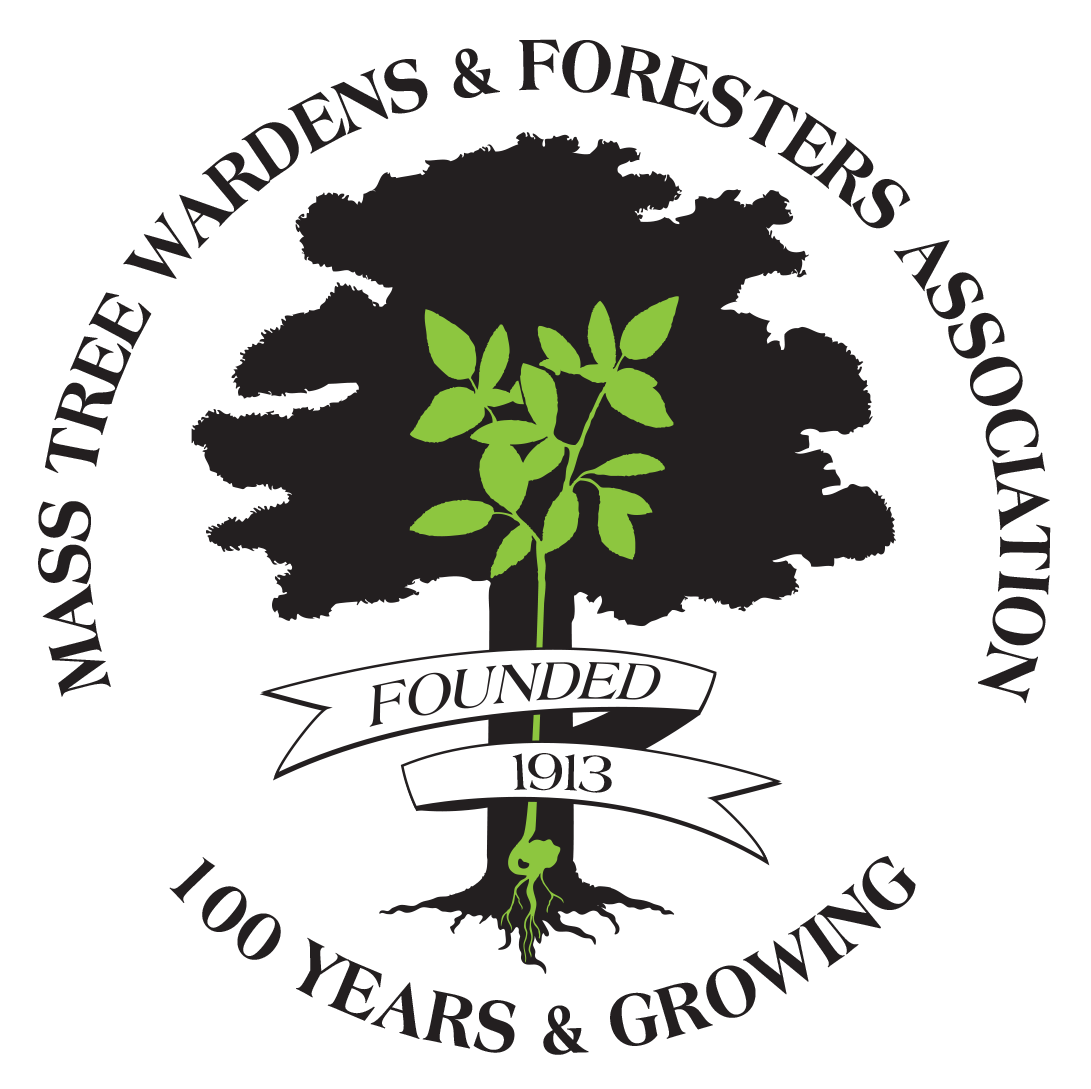The principal law that governs and guides tree wardens is Chapter 87: Shade Trees of the Massachusetts General Laws.
There are two one-hour webinars about Massachusetts tree laws that may also be helpful. They are archived at Urban Forestry Today. One is Trees and the Law with Attorney Julie Steiner (from 4-3-17) and the other is Urban Trees and the Law: An Arborist’s Perspective with Tom Brady, Tree Warden for Brookline (from 1-4-18). Here is the page where you can listen. Use the dates in parentheses to find them easily—the videos are listed chronologically with the most recent ones first.
On January 5, 2011, Governor Deval Patrick signed into law the addition of Section 14 to Chapter 87.
This new section was formulated to help utility companies and tree wardens manage tree maintenance and removal work under the wires. The law allows the utility company the option to submit to the tree warden an annual tree management and hazard tree removal plan. This section was added for two main reasons: to create better lines of communication between electric utilities and tree wardens, and to streamline the approval process as outlined in Sections 3 and 5. The Massachusetts Tree Wardens’ and Foresters’ Association cooperated with legislators and the electric utility companies to craft the language of Section 14. Efforts to revise Chapter 87 further are continuing with the proposal of updates to older sections in an attempt to bring the law current with the times.
Qualifications of tree wardens are a matter of ongoing discussion. The current law that applies is Chapter 41 Section 106.
The law’s confusing language, added in 1996, requires that tree wardens in towns over 10,000 population be “licensed by the Department of Food and Agriculture” (meaning a pesticide license). The pesticide license in no way certifies a person to be “qualified by training and experience in the field of arboriculture” as Section 106 requires. This confusion led to a 1999 effort by a consortium of arboriculture experts to assemble recommended qualifications for tree wardens based on population served.
Public trees located on a designated scenic road are subject to the provisions of Chapter 40 Section 15C.
For a complete set of all laws pertaining to trees and tree wardens in Massachusetts, please refer to the Tree Wardens Handbook, 8th Edition.
Julie Steiner, J.D., has published “Guardians of Municipal Public Trees: Commonwealth of Massachusetts Tree Wardens’ Authority and Accountability,” 38 W. NEW ENG. L. REV. 377 (2016). The scholarly article is both a great addition to the tree warden archives and an excellent supporting case to update the Chapter 87 law to meet present needs. Read the article here. You can also view it online in the Western New England Law Review Journal. Dr. Steiner has twice been a part of the Chapter 87 panel at our annual conference.
Chapter 87 Proposed Revisions
For the past several years, the Massachusetts Tree Wardens’ and Foresters’ Association has been advocating for changes to modernize Chapter 87: Shade Trees. Several previous two-year legislative sessions have ended without the passage of these revisions. For the first time, the bill is now filed on both the House and Senate sides as Bill H.1088 and Bill S.1122 in the current legislative sessions (190th) session. Scroll down to see the specific goals of these revisions.
Background
- The earliest versions of M.G.L. Chapter 87 were passed in the late 1890’s, in order to provide tree wardens the ability to protect their community trees.
- By 1913, the Shade Tree Law (now known as Chapter 87) gave tree wardens effective tools to protect public trees. The law as it was then matched the knowledge and methods of doing business at the time.
- In 1913, tree wardens became qualified in their profession primarily through experience, without the benefit of training workshops, industry publications, and peer gatherings.
- Much of the initial language in Chapter 87 was created in this era.
- Since 1913, Chapter 87 has had only minor revisions.
- Since 1913, major changes in the industry include
- Dramatic shifts in the makeup of a community’s forest, tree canopy, and the interface between people and trees.
- Significant advancements in both the tree-science knowledge base and in current tree care practices.
- Today the industry of community tree care (urban forestry) is based on
- sound arboricultural practices
- scientific research
- modern management approaches
- Widespread urban forest impacts in the last several years have highlighted the importance of having trained and qualified personnel.
- Insects and weather events affecting trees have included Asian longhorned beetle in Worcester, emerald ash borer, ice storms, Springfield area tornadoes, and Tropical Storm Irene.
- Today’s emphasis is on good decisions based on both science and a community’s liability issues. Such decisions require assessments that only a qualified and trained person can make.
Proposed Revisions to Chapter 87: Four Goals
- Make minor changes that will align with current times and practices.
- Example – Section 12: add language to indicate damage done by a vehicle as well as a horse.
- Example – Section 5: increase the size of a tree removal that requires a hearing, from 1.5 inches diameter to 4 inches.
- Bring standards up to current times and needs by addressing several critical shortcomings.
- Example – Section 5: add a requirement that industry standards must be followed when evaluating trees for potential risk.
- Example – Various sections: specify allowable fines that are more reflective of the value of the damage done.
- Allow for the creation of standardized regulations to provide a mechanism that can change with time and needs.
- As noted above, industry standards and practices have evolved since 1913. Scientific research advances, and methodologies change continuously.
- The regulations governing public trees need to be adjustable with these changes. Section 15 adds the creation of regulations with oversight from the Commonwealth.
- Institute standard requirements to ensure that tree wardens are qualified to perform their jobs.
